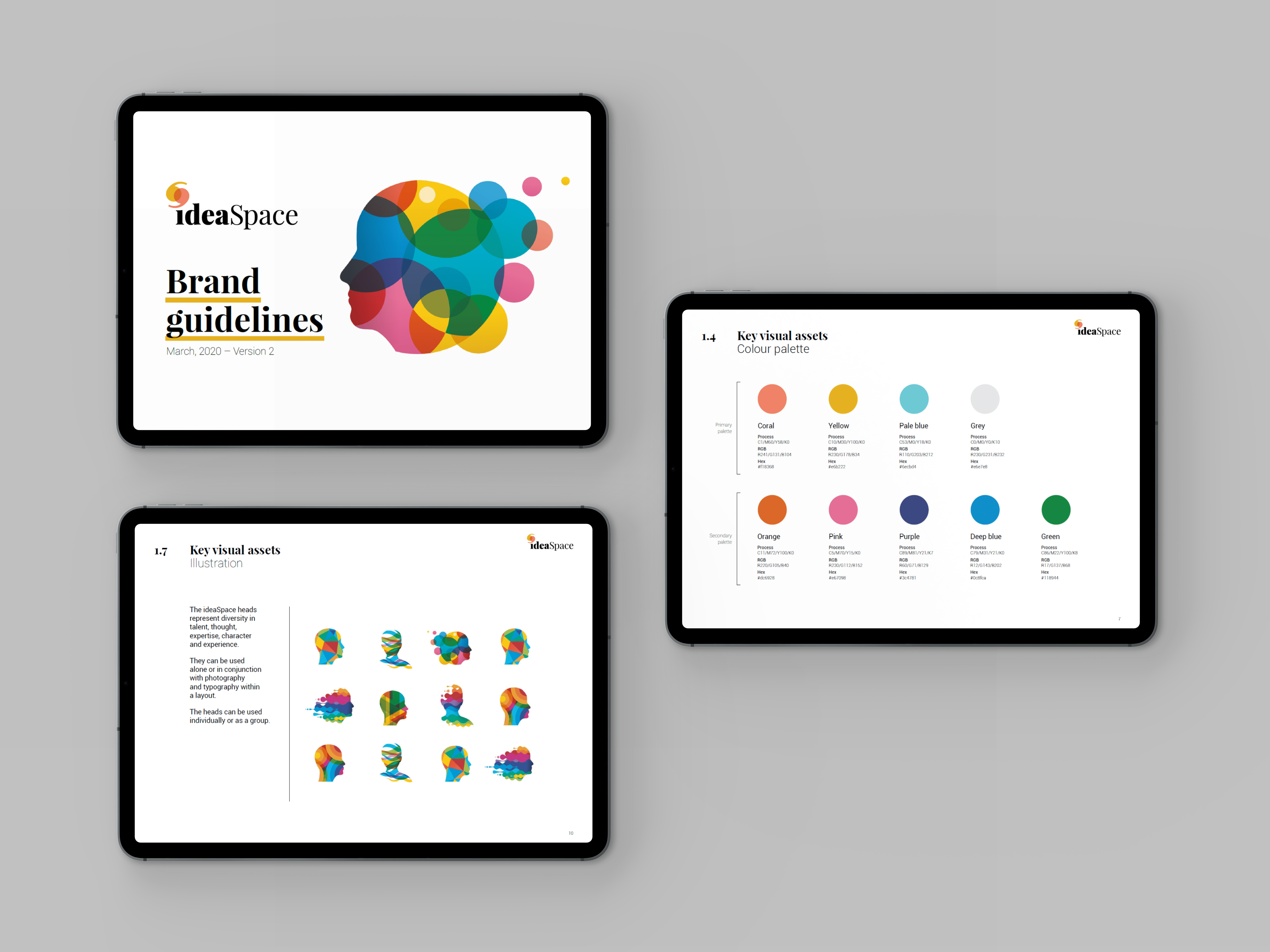When creating a brand, there are lots of factors to think about. From positioning to strategy, brands need to align their purpose with clear visuals and messaging to resonate with their target audience. An important part of this approach is the consistent use of brand assets by many stakeholders across multiple channels and mediums. That’s why brand guidelines are so important, as we discuss in this article…
Brand guidelines or style guides are a set of instructions that define how to present a brand, both in terms of visuals and word choice. They outline the elements and components of a brand’s identity, such as its logo, colour palette, typography, tone of voice, imagery and other visual and design elements.
Following these guidelines ensures brand consistency across all communication channels and touchpoints, including websites, social media, advertising, packaging, or promotional materials. By presenting a consistent message, it’s easy to maintain a cohesive and recognisable identity, build trust with customers, and differentiate yourself from your competitors.
Because several creative teams, including graphic designers, marketers and web developers use them, brand guidelines typically include sections on:
They may also include guidance on usage on specific platforms, such as social media, email or video. Some brands may also include guidelines on environmental sustainability, ethical practices and social responsibility.

Whether brand guidelines are confidential depends on the specific organisation and its policies.
Some companies consider their brand guidelines to be confidential and require employees, contractors, or partners to sign a non-disclosure agreement (NDA) before sharing them. Often this is because the guidelines contain proprietary information or trade secrets that could give competitors an advantage. In these cases, they may only share the brand guidelines on a need-to-know basis with individuals who have signed the NDA.
Other companies may choose to make their brand guidelines publicly available, usually on their website. This can be a strategic decision to increase brand awareness, promote transparency, or facilitate collaboration with partners and stakeholders.
If you are unsure about the confidentiality of a particular brand’s guidelines, it’s best to check with the organisation or consult a legal professional.
People often use the terms ‘brand guidelines’ and ‘style guide’ interchangeably, but there are some subtle differences between them.
Brand guidelines typically provide more comprehensive guidance than a style guide. They cover not only the visual and design elements of a brand but also the brand’s values, mission, tone of voice, and other aspects of its identity. A brand’s marketing team or a branding agency typically create brand guidelines and everyone in the organisation who communicates with customers or represents the brand uses them.
A style guide usually focuses solely on the visual and design elements of a brand. It provides instructions on how to use colours, fonts, images, and other design elements consistently across different communication channels and touchpoints. Graphic designers or design agencies often create style guides for use by other designers, writers and creatives who produce content for the brand.
In summary, brand guidelines provide a comprehensive overview of a brand’s identity, while style guides focus on the visual and design elements of its identity. However, both are important tools for maintaining consistency and cohesiveness in a brand’s communication and design.
Brand identity refers to the visual and emotional elements that represent a company, product, or service. Through the combination of visuals, design features, messaging, values and personality, a brand can build its own identity and set itself apart from its competitors in the minds of its customers.
Visual elements of a brand can include its logo, colour scheme, typography, imagery and photography style, tone of voice, tagline, as well as other visual and design elements. It also encompasses the brand’s values, mission, purpose, and personality, which all influence messaging, marketing campaigns, and customer interactions.
A strong brand identity can help a company build trust and loyalty with its customers, differentiate itself from competitors, and create a lasting impression in the minds of consumers. A well-designed and consistently applied brand identity can help to increase brand recognition and awareness, and ultimately contribute to the success and growth of a business.

“

Creating brand guidelines involves several steps, which include:
When creating brand guidelines, it’s important to involve key stakeholders and ensure that everyone understands and supports the brand identity and guidelines. You may also want to seek the help of a branding agency or a graphic designer to ensure that your brand guidelines are professional, effective and consistent with industry standards.
Our design and marketing teams have extensive experience assisting businesses across the globe to create effective brand messaging and long-term strategies. To discuss your branding needs, please get in touch with our friendly team today at hello@jdjcreative.co.uk or fill in our contact form.
Share
Sign up to our monthly newsletter to receive your guide to thought leadership design.

Sign up to our monthly newsletter to receive your guide to annual report design.

Sign up to our monthly newsletter to receive your guide to sustainability report design.
